Photo essay for the Special Initiative “From Fear to Resilience: Visual Storytelling of COVID-19 in Southeast Asia” by SEA Junction and Partners.
| Title: | Lockdown Lessons from Phnom Penh for a More Livable City |
| Storyteller/Photographer | Conrad Richardson |
| Place: | Phnom Penh, Cambodia |
| Time: | 15 May 2021 |
Yesterday (15 May 2021) was the last day of the strict house-arrest style lockdown for those fortunate enough to live in the ‘Yellow Zones‘, and the start of a gradual easing of restrictions (fingers crossed), although shops and restaurants remain closed. I was fortunate to find myself in a yellow zone, so after 3-weeks at home, I took the opportunity to document the streets around the iconic Central Market. Those inhabiting the ‘Red Zones’ are unfortunately confined to their homes, with limited support from the government, and many street hawkers have found themselves unable to work. Thankfully, civil society groups like #Local4Local and #Art4Food have however come together to raise funds and distribute food to those in need.
Central Market is normally engulfed in traffic and pollution, yesterday however was different — what is normally a chaotic and over-stimulating experience, was calm and peaceful. For the first time ever, I could hear the birds overhead. People reclaimed the streets and were out to play. Many could be seen enjoying their newfound freedom walking, running, cycling, and playing sports. It seems lockdown has allowed (some) people to reconnect with their city, and (at least) temporarily take back ownership of the streets.
This is an experience shared around the world — for the first time, due to lockdown we can smell and hear our cities, instead of vehicle engines and the ceaseless beeping from impatient drivers. Moreover, the air quality has improved, nature has returned, and this was largely owing to our car-free(er) streets.
Let me clarify: no, I am not praising or glorifying lock-downs. I do acknowledge the devastating socio-economic impacts of lock-downs (…after all I too lost my home, job, and found myself separated from many loved ones for several months in early 2020… but that’s a story for a future post). As a sociologist and urban planner, I do however love the reduced traffic. This photograph from Delhi (from the Guardian) is particularly powerful as it shows the lack of pollution and haze during lockdowns (right side) when compared to before (left side).
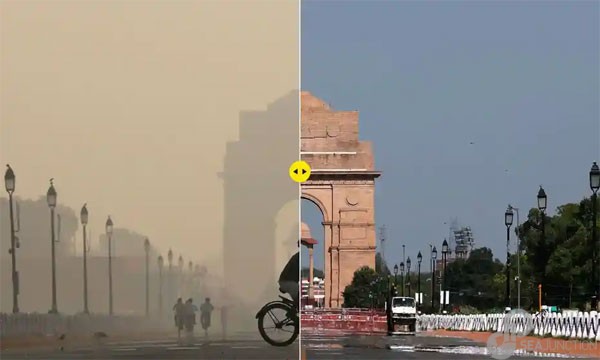
After all, our cities should be for us, the people, not cars. I also think lessons can be learnt for post-pandemic times from observing how we behave in in lockdowns.
The healthier environment with few or no cars as observed during lockdowns should really motivate us to accelerate a transition towards cities that are less dependent on combustion engines and private mobility. And, instead favour high-capacity public and shared modes of electric transport for medium to long-distance trips, and non-motorised (walking and cycling) for shorter distance trips. All of which will require a plethora of new costly infrastructure, but more importantly, what is needed is a mindset change, from both, us (civil society), and our local/national governments.
On the topic of cost, yes, public transport systems are very expensive to develop. Cycle paths and medium-quality walking infrastructure, on the other hand, can be achieved using some paint and better enforcement of curbside parking ≈ this requires political-will, and not huge sums of money.
Nevertheless, for those costly infrastructures, such as Metro systems, we must also consider the cost of not developing them.
In the case of Phnom Penh, a rapidly motorising city, seeing an 11% annual growth in vehicle numbers, entering the already congested streets. That being the case, in a Business-As-Usual scenario, what will the city look like in 2-years, 5-years, 10-years? Paralysis. This is problematic, because the smooth and seamless movement of people and goods is necessary to keep the economy humming.
Why not just build more roads? time and time against this has proven to be a short-sighted approach due to what we call ‘induced demand’ (this VOX video summarises this perfectly), that can be nicely summarised using this quote from the great American urbanist Lewis Mumford, who famously said:
“Building more roads to prevent congestion is like loosening your belt to cure obesity. It does not work”
Back to Phnom Penh, in 2015, congestion is said to have cost Phnom Penh $6-million a month in petrol loss alone (this excludes traffic accidents, the long-term health effects from localised air pollution, and all the additional resource requirement needed to cater for the car: roads, car park, green-field development, etc…). Moreover, these so-called ‘negative externalities’ extend our social lives. A life stuck in traffic, is not a happy life. A Swedish study has revealed that long distance commuters (+45-minute one-way) are more likely to get divorced. And even for those who choose not to drive, they still end up having to endure the air and noise pollution from private cars. Solving these issues, therefore, has a strong economic, environmental, and societal rationale. Where to start?
Let’s start small, very small. As previously mentioned, mindset change is the necessary first-step to creating healthier and happier cities. Unlike fitness models, few people have cities they look-up to because of their good urban and transport planning, because we take the built environment for granted, and forget that everything we see is the outcome of conscious decision making. Yet, we need city role models. Barcelona for instance, pre-1992 Olympics Barcelona was not such a pleasant city, today, owing to foresight and good urban planning and design, focused around non-motorised mobility (walking and cycling) the city thrives.
The broader public also needs to experience their city with far fewer cars and much more public space. However, local governments can not just snap their fingers and create such spaces… they are after all heavily scrutinised by the local tax-payers (us). All considered, the best place to start is with a ‘Car Free Day’— this is a yearly, monthly, or weekly event whereby carefully selected streets usually wider boulevards lined with shops are closed to traffic, to be reclaimed by people (I have summarised the history of this event in the video below). There is a much bigger picture to this simple event: by bringing people together, to co-experience how much more liveable our cities could be, can lead to some profound realisations. This can then inspire dialogue between the public and the local government, from which additional activities can take place, such as the permanent closures of certain streets (which has shown to increase business), but can even extent to the introduction of new cycle paths, green corridors, public transport systems, etc.
Fact of the matter, (1) we are an urbanising species, by 2050 75% of us will be living in urban areas, (2) our current approach to automotive-influenced urbanisation is socially, economically, and environmentally unsustainable… it is therefore in our best interest that we create not only liveable cities, but also cities that inspire us to be healthy and happy, so let’s update our mindset, starting with a Car Free Day, and strive to plan, design and engineer our cities as extensions of our homes.
See you on the 22nd of September on World Car Free Day! (COVID permitting).
Storyteller/Photographer
Conrad Richardson is a Smart & Sustainable City/Mobility Specialist with an international professional and academic background in urban & transport planning, engineering, design and communication across Asia, Africa, North America, the Middle East, and Europe. He is running with his team the Sustainable Mobility in Metropolitan Regions in ASEAN project. He shares on his
profession as an urban/transport planner, and ongoing projects in Cambodia, and across the ASEAN region in the video here and below. More info can also found on his social media:
Instagram: https://www.instagram.com/conrad.richardson/
Facebook: https://www.facebook.com/urbandialectic
Linkedin: https://www.linkedin.com/in/conradrichardson/
Organizers
This story is part of “From Fear to Resilience: Visual Storytelling of COVID-19 in Southeast Asia” a special initiative of SEA Junction with the support of CMB to promote an alternative narrative of survival, resilience and solidarity. We are asking for short stories in the form of photo essays, short documentaries and illustrated art essays in any language of Southeast Asia (to be later translated into English) or in English. For more background and other stories click here.
SEA Junction
SEA Junction, established under the Thai non-profit organization Foundation for Southeast Asia Studies (ForSEA), aims to foster understanding and appreciation of Southeast Asia in all its socio-cultural dimensions- from arts and lifestyles to economy and development. Conveniently located at Room 408 of the Bangkok Arts and Culture Center or BACC (across MBK, BTS National Stadium), SEA Junction facilitates public access to knowledge resources and exchanges among students, practitioners and Southeast Asia lovers. For more information see www.seajunction.org, join the Facebook group: http://www.facebook.com/groups/1693058870976440/ and follow us on twitter and Instagram @seajunction
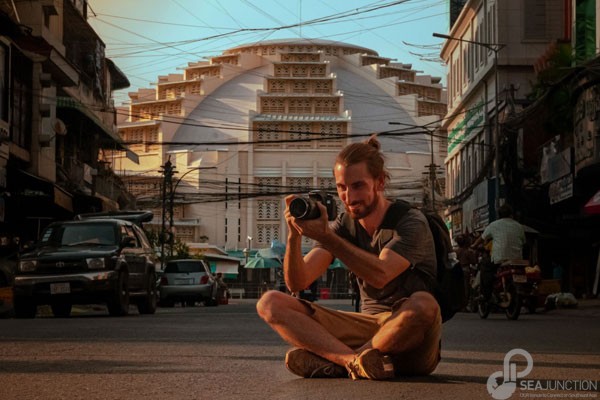
The quiet streets make for great photography opportunities.
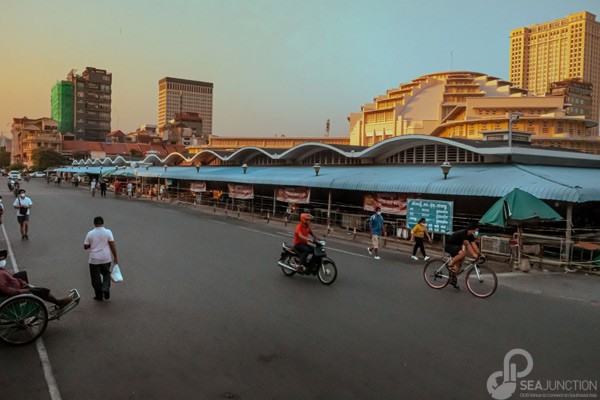
Car free(er) streets around Central Market
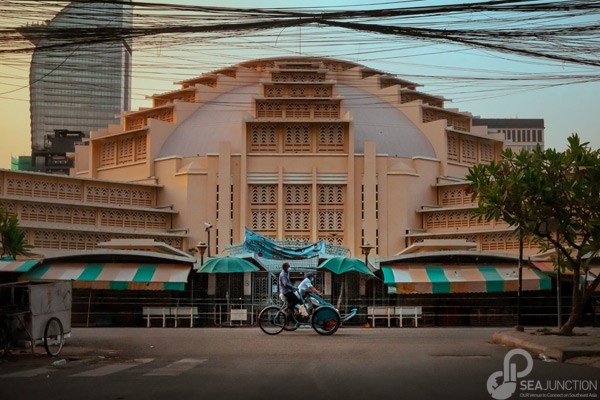
Quiet streets surrounding Central Market
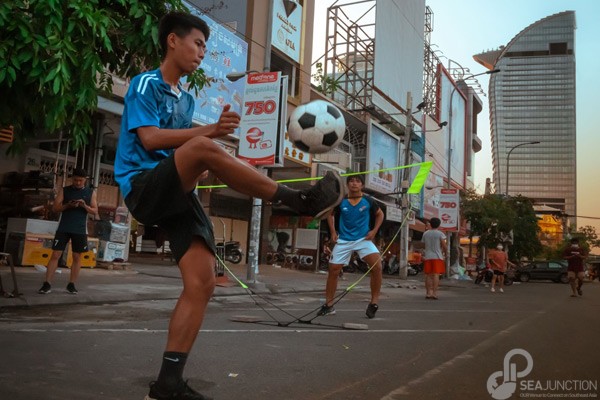
People have reclaimed the streets and are out to play
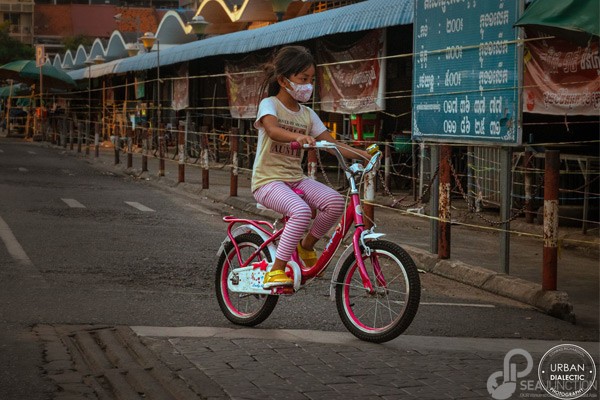
Children are out cycling on what would normally be dangerous busy streets.
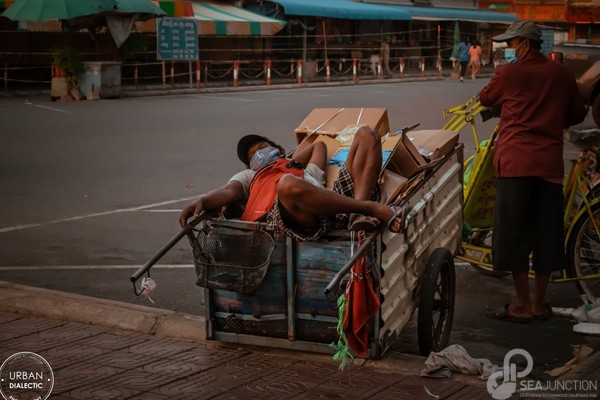
The street hawkers have seen a drastic reduction in working opportunities
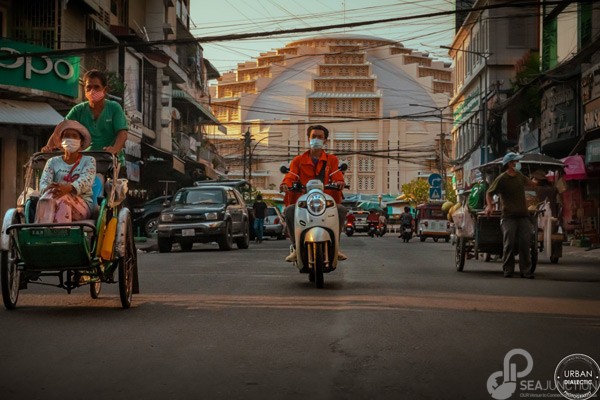
The cyclos (tricycles) are still operating and supporting with the charity food distribution.
LOCKDOWN LESSONS – for a CAR FREE(er) CITY | Phnom Penh, Cambodia


